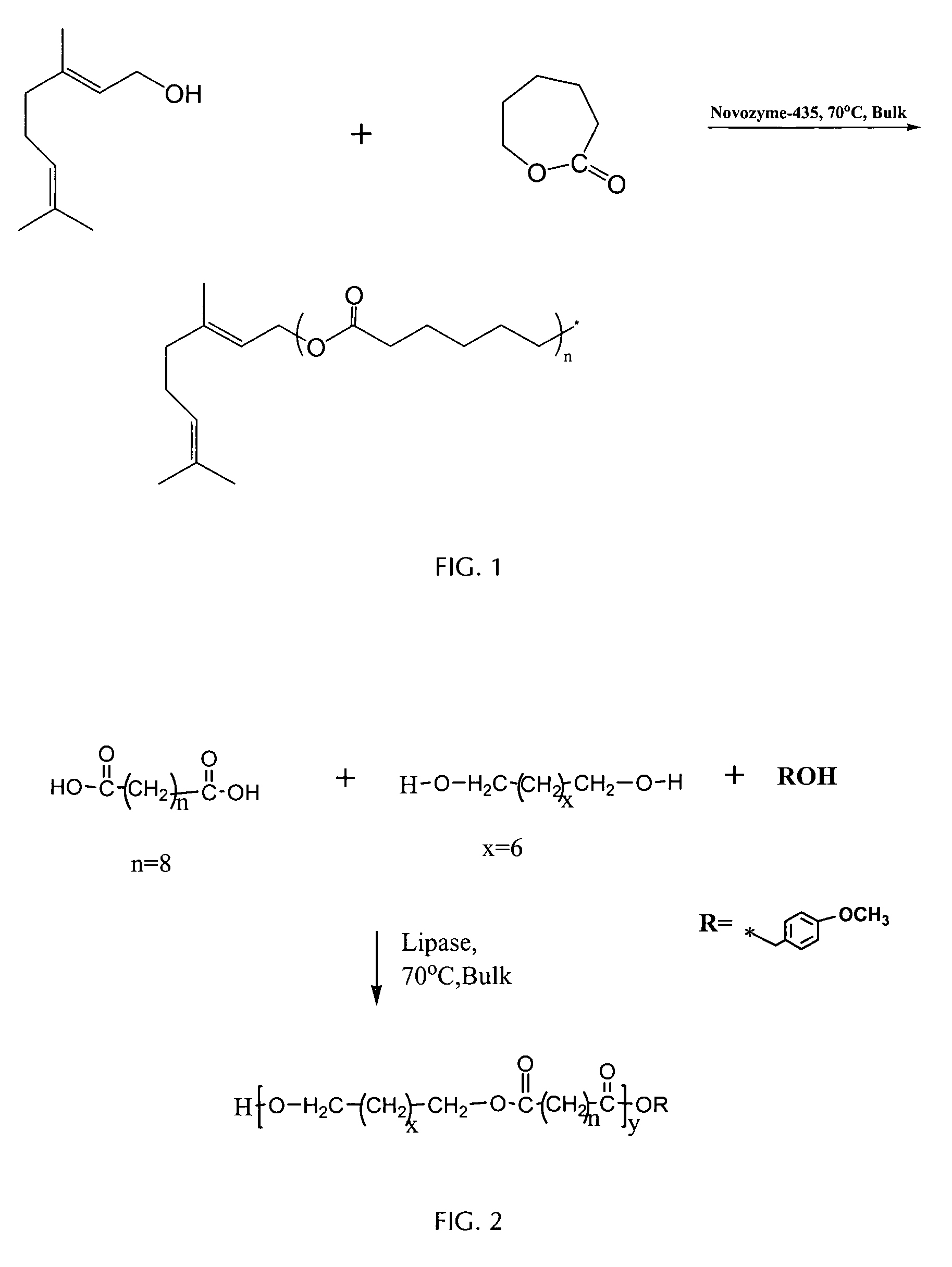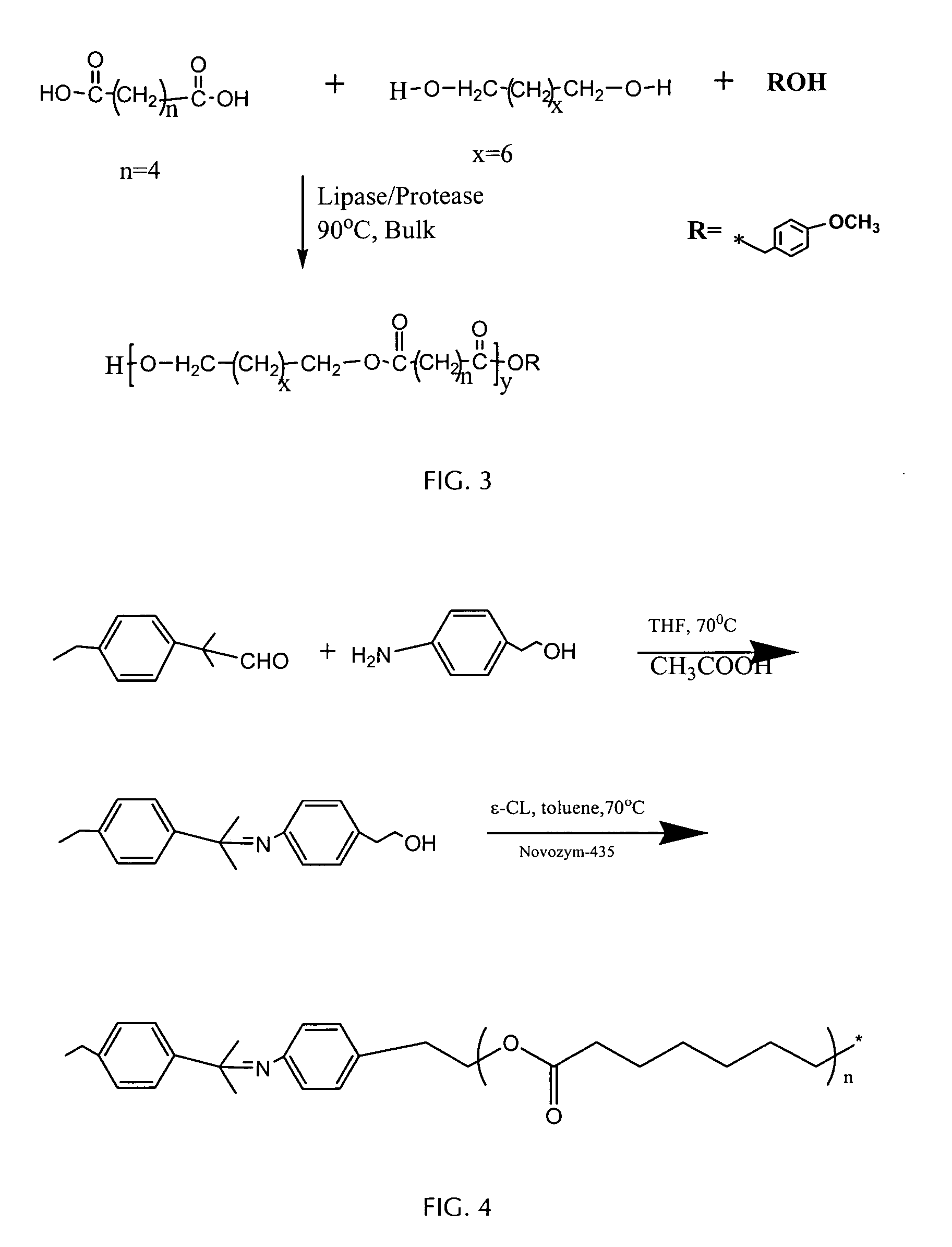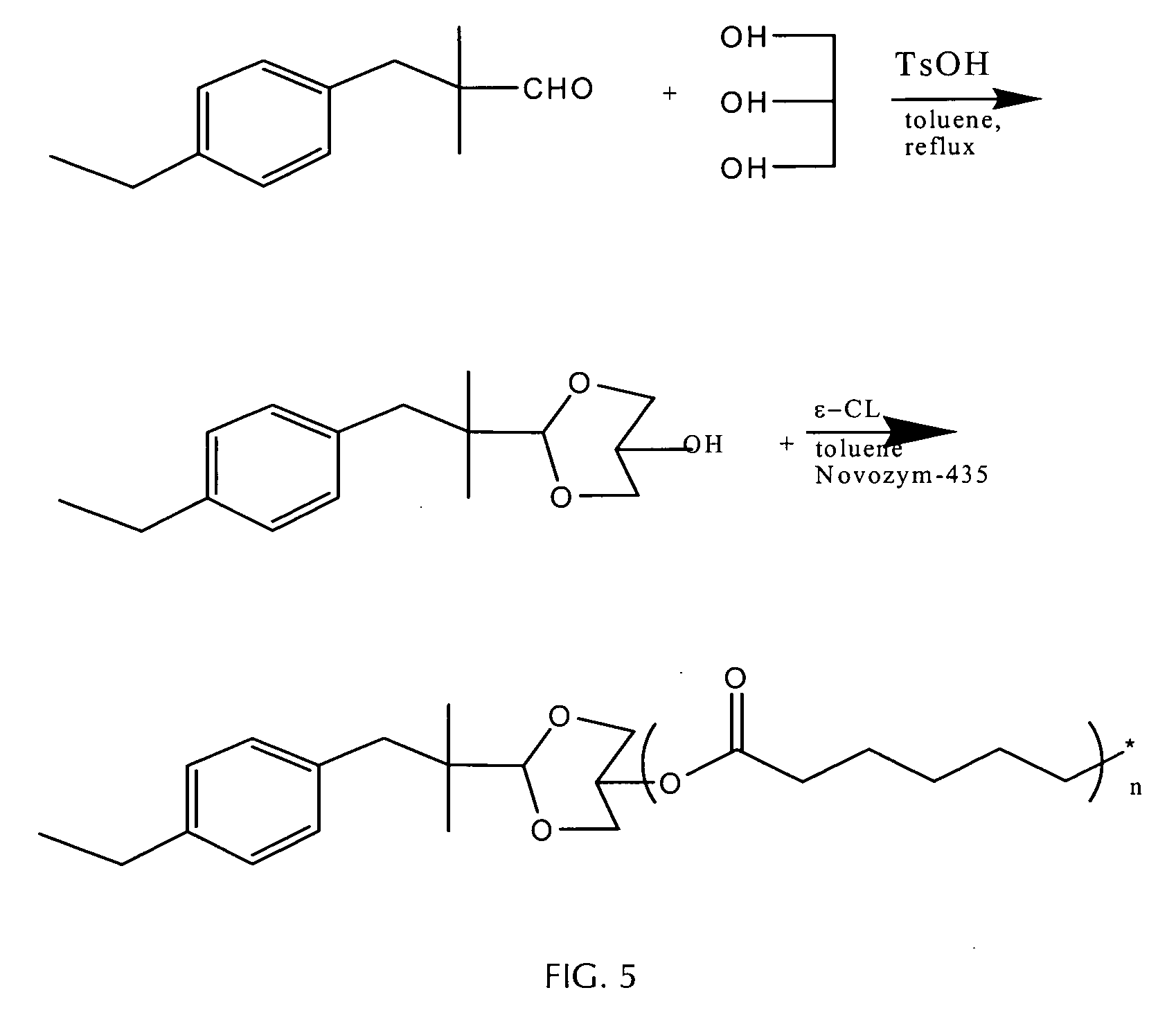Sustained release of active molecules from polymers topically applied to skin or hair
- Summary
- Abstract
- Description
- Claims
- Application Information
AI Technical Summary
Problems solved by technology
Method used
Image
Examples
example 1
[0090] Lipase-catalyzed synthesis of oligo(caprolactone) with geraniol esterified at the carboxyl termini of chains: Novozyme-435 ( 1 / 10 wt / wt of monomers) dried in a vacuum dessicator (0.1 mmHg, 25° C., 24 h) is transferred under nitrogen atmosphere into oven dried 10 mL pyrex culture tubes containing ε-caprolactone and geraniol in the ratio of 5:1 mol / mol. The vials are stoppered with rubber septa and further sealed with teflon tape. Dry toluene (2:1 vol / wt of the monomers) is subsequently added into the reaction vial. The vial is then placed into a constant temperature (70° C.) oil bath with stirring for 2-4 hours. The reaction is terminated by adding excess cold chloroform and removing the enzyme by filtration (glass-fritted filter, medium pore porosity). The insoluble material is washed several times with hot chloroform. The filtrates were combined, chloroform is removed by rotary evaporation, and the residue is dissolved in chloroform:ether (1:2 v / v) and precipitated 2-times b...
example 2
Lipase-Catalyzed Condensation Polymerization of Sebasic Acid, 1,8-Octanediol, and Anisyl to Form the Corresponding Polyester with Anisyl Esters at the Carboxyl Termini of Chains
[0091] Sebacic acid (Aldrich, 2.02 g, 1 eq.) is suspended in the melt of octanediol (Aldrich, 1.32g, 0.9 eq.) at 135° C. The temperature of the reaction mixture was then lowered to 90-95° C. Anisyl alcohol (0.14g, 0.1 eq.) and Novozyme-435 (347 mg, 10% w / w of monomers) were charged to the flask and the reaction was continued for 2 h. The reaction is then subjected to reduced pressure (10 mmHg) to remove water from the system. For all other details, see the General Process Methods above. After 48 h the reaction mixture was fractionated by precipitation into methanol. The resulting product was obtained in 72% yield: Mn and Mw / Mn 608 and 6.5, respectively (by SEC). Proton NMR (in CDCl3) of the fractionated product was used to analyze the polymer end-group structure (see above, general analytical techniques, NMR...
example 3
Lipase-Catalyzed Condensation Polymerization of Adipic Acid, Sorbitol and Anisyl Alcohol to Form the Corresponding Polyester with Anisyl at Carboxyl Termini of Chains
[0092] Adipic acid (Aldrich, 1.46 g, 1 eq.) is suspended in the melt of sorbitol (Aldrich, 1.64 g, 0.9 eq.) at 130° C. The temperature of the reaction mixture is brought to 90-95° C. and then anisyl alcohol (0.14 g, 0.1 eq) and Novozyme-435 (324 mg, 10% w / w of monomers) were added to the reaction flask. The reaction was maintained at between 90 and 95° C. for 48 h. Furthermore, after the first 2 h, the reaction was placed under vacuum (from 20-50 mmHg) for the remaining 46 h. For all other details see the General Process Methods above. The reaction product obtained after 48 h was dissolved in chloroform, the solution was filtered to remove enzyme, concentrated, and then precipitated by addition into methanol. The product was obtained in 77% yield: Mn and Mw / Mn by size exclusion chromatography (SEC) were 140 and 2.9, re...
PUM
| Property | Measurement | Unit |
|---|---|---|
| Bond | aaaaa | aaaaa |
Abstract
Description
Claims
Application Information
 Login to view more
Login to view more - R&D Engineer
- R&D Manager
- IP Professional
- Industry Leading Data Capabilities
- Powerful AI technology
- Patent DNA Extraction
Browse by: Latest US Patents, China's latest patents, Technical Efficacy Thesaurus, Application Domain, Technology Topic.
© 2024 PatSnap. All rights reserved.Legal|Privacy policy|Modern Slavery Act Transparency Statement|Sitemap



